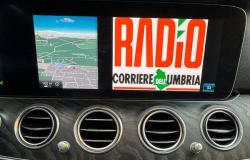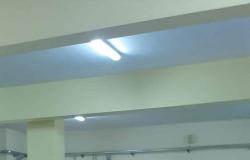Every spring inside the rose windows of Palazzo SerristoriHouse martins nest on the Lungarno of the same name in Florence. It’s been happening every year for a long time. And so it happened – the last time – also in 2023. But for several months the building is undergoing renovation and the scaffolding also completely covered their “little houses”.
Thanks to a cutting-edge intervention, this time the martins were not left without a place to nest: when they started arriving a few weeks ago, they found artificial nests on the scaffolding.
To date, out of the 93 positioned, they are already 32 were employed.
The project
In February 2024 – before the start of coverage for the restoration of the palace – they were 93 nests were recorded resting on the petals of the rosettes of 39 panels. For restoration purposes, all the tiles that decorate the cornice were dismantled, checked and restored and hang up.
«In the name and on behalf of local volunteers I contacted the site managers in early 2023finding full willingness to take the house martin colony into account – he explains Mauro Ferria wildlife veterinary surgeon and member of the group Living Monuments – Before starting to cover the tiles, after an on-site inspection to verify the situation, I prepared a guideline for creating “fake temporary cornices” to hang on scaffoldingequipped with artificial nests”.
The installations were then created by Cev and positioned on the two central facades of the building.
«This is a practically unique intervention in Europe – he explains Mauro Ferri again – It is the first temporary compensation project for house martins actually implemented in Italy and beyond.”
The house martins’ nest
«Martins are smaller than swallows and have a U-shaped tail but without the two rectrices – he explains Alessio Rivola, one of the volunteers of the Lipu of Florence who collaborates in the monitoring and census of these birds (and also of swifts and mice) in the city – Their nests, built by mixing mud and saliva, are completely closed except for a small hole in the top. The artificial ones in Palazzo Serristori immediately found their liking.”
Next objective: Ponte Vecchio
CEV has also placed a PVC poster on the construction site fence where the details of the project are explained and you can see photos and read in-depth information on the topic thanks to the QR code.
But that of Palazzo Serristori is only the first case of protection of martin colonies in Florence. “Soon restoration work will begin on Ponte Vecchio – Alessio Rivola explains further – Under the arches there is another important colony of these insectivorous birds and also in this case artificial nests will have to be built. We are already moving forward with the Municipality.”
Links
The Monumenti Vivi Facebook page: here is the link.
The map of the swift and swallow colonies in Florence: here is the link
Tags: cuttingedge restoration Europe





